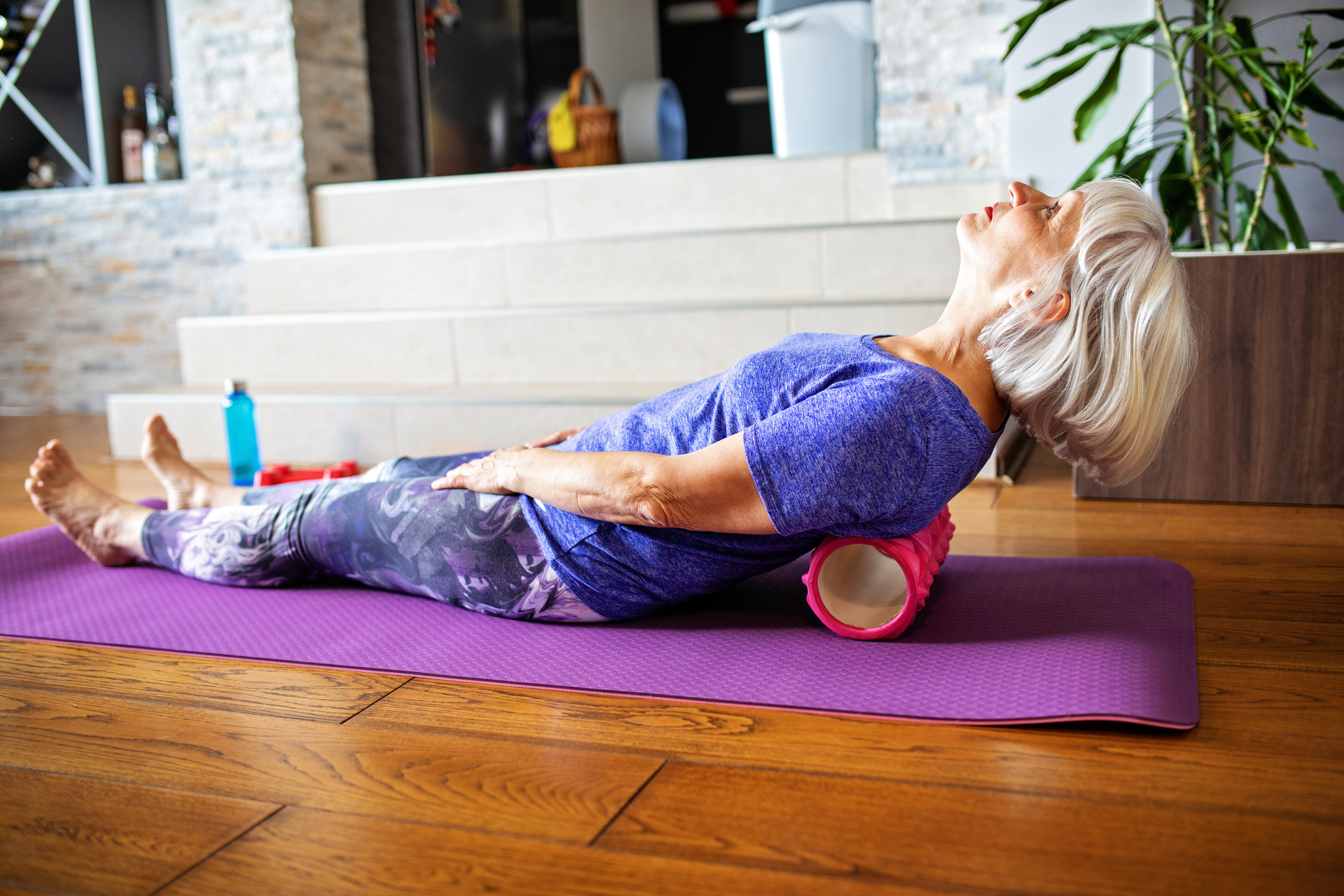Get Easy Health Digest™ in your inbox and don’t miss a thing when you subscribe today. Plus, get the free bonus report, Mother Nature’s Tips, Tricks and Remedies for Cholesterol, Blood Pressure & Blood Sugar as my way of saying welcome to the community!
Massage therapy benefits without the masseuse

Stretching is not enough to get the legs supple and ready to exercise. Often there are old injuries to work through, scar tissue adhesions that bind, and trigger points to release. To do all of this would require visits to the gym, massage therapist and physical therapist. Fortunately, there is a device called the foam roller that is available everywhere from sporting goods stores to Target to Five Below that can get your legs pumped with blood, supple and ready to workout in minutes.
In today’s video article my friend and trainer Dennis Angelina of Fast Twitch Training in Spring House, PA will show you three simple ways to use the foam roller, before and after workouts or for therapy, to get the lower body where it needs to be. He will show rolling techniques for the hamstrings, IT band, and quadriceps.
Finding the right foam roller
There are a bunch of different varieties. The more common are the smooth surface rollers that are generally a solid color. The red ones are softer and the black color ones tend to be denser. The softer ones are easier on the body, and good for those who are in pain, extra sore, or have not had a massage or stressed placed on their muscles in a while. The denser ones are great for those who need to go a little deeper into the muscle for a more aggressive rolling session.
The next type of rollers are knobby with deep sturdy-foam crevices, called rumble rollers. These are not recommended for first timers, but are fantastic for those who are athletic and used to putting their body under pressure. Because of the knobs these are used for “flossing” of the muscles, which is a way to say pressing through trigger points and frozen fascia.
When to use foam rollers
Foam rolling is a great thing to do before your workout to help loosen muscle and fascia and bring blood flow into the muscles. This helps prepare the body for workout and thus helps reduce the chance of injury. After a workout, rolling helps you cool down the muscles and remain pliable after as opposed to just stiffening up.
How to roll properly
I have seen many videos and even books that demonstrate foam rolling techniques. Many times I have been dismayed that what is shown is simply to lie on top of or lay a limb on the foam roller and just roll back and forth. This is not efficient and can actually cause harm.
You always want to begin by getting into the proper position first, and this means lining up the foam roller under the belly of the muscle you intend to roll. You do not want to roll of joints or bony parts, as this can cause unnecessary inflammation and injury. Now let’s begin.
Hamstring rolling
Sit on the floor with legs in front, knees slightly bent and the foam roller in position directly under the belly or center of the hamstring muscles. Now lower your hamstrings by placing your bodyweight down onto the foam roller, lifting your feet up by extending your legs, and placing your hands behind you for balance and support.
You will then roll forward and backward on the foam roller along the length of the muscle, again being sure not to roll onto the joints. If you are finding you cannot get enough pressure into the hamstrings simply stack one leg over the other to provide more bodyweight and pressure and you will feel it. Try to do 10 passes on both legs together or individually.
IT Band rolling
Many athletes and sedentary people experience tight IT bands; these run along the sides of your thighs. Top roll on them, lie on your side with one leg on the roller and the other with knee bent and in front of you for support. The arm on the same side as the rolling leg is used for balance and motion. Roll up and down the IT band, focusing on the belly of the muscle, for 10 passes on each leg.
Quadriceps rolling
For the quads, you want to rest your legs on top of the roller, body facing toward the ground like in a push-up position. Again beginning with the foam roller in the center or belly of the quadriceps, using your arms to adjust how much of your body weight is on the roller. Roll back and forth slowly for 10 counts. If this is not enough pressure, you can stack (cross) one leg on top of (over) the other and roll each leg 10 times individually.
Give these foam rolling techniques a shot and see how they can help get you ready for exercise or bring you back to better working condition.












